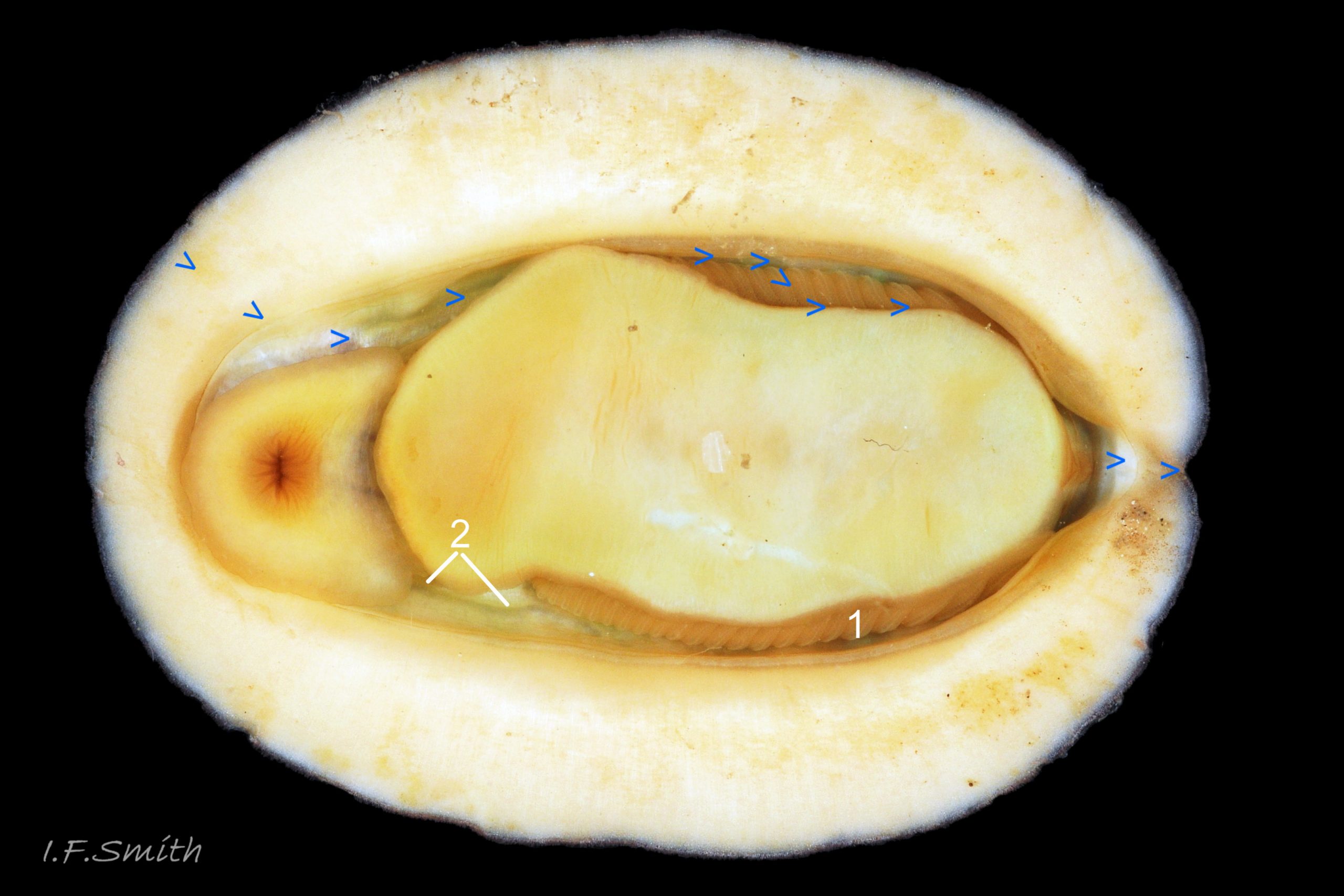Length 29 mm. LWS. Isle of Lewis, Scotland. April 2018. Leg. D.W. McKay & S.Taylor.
An open, narrow mantle cavity runs around the whole animal. It contains 17 to 26 small ctenidia on each side (1), often for nearly the whole length of the foot (merobranch, but nearly holobranch, arrangement). Number of ctenidia increases with age.
Adjacent ctenidia have interlocking cilia so all move as a unit to move water currents. Inhalent water current passes under the raised anterior of the mantle, along the mantle cavity, through the ctenidia and then between foot and ctenidia as an exhalent current to the posterior where it exits via a channel through the girdle. Haemolymph (blood) circulates from the head sinus through longitudinal sinuses to the mantle (2), foot, and viscera, then through the ctenidia for aeration before passing into the adjacent heart in the pericardium below valves vii & viii (see 48 Tonicella marmorea ). From the heart the blood is pumped through the medial dorsal aorta to the head sinus, giving off some channels to the gonad and valve muscles on the way.
46 Tonicella marmorea

